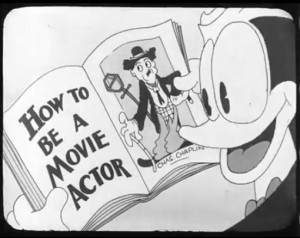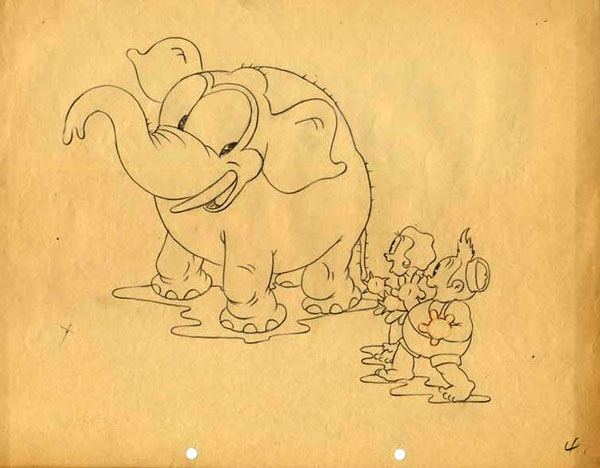
Going pretty simple this week here at TB Thursday; things are going quite well and busy as heck, with lots of things rounding important milestones. The biggest change will be moving Thunderbean back out of its current basement dwelling and back into a small office again. We’re all celebrating that!
 The new scans that are getting done are looking beautiful; Five projects are coming to conclusions at almost the same time right now, with three others getting closer and closer. Things are still bottlenecking with me at the helm; having the orders out of my personal hands should make it much easier to get to working on new stuff sooner than 10 at night most of the time! I’ve heard that Monday some of the unscanned ‘Flip’ soundtracks will be done along with additional elements of others that may or may not have the opening music track I’m pining so much to hear.
The new scans that are getting done are looking beautiful; Five projects are coming to conclusions at almost the same time right now, with three others getting closer and closer. Things are still bottlenecking with me at the helm; having the orders out of my personal hands should make it much easier to get to working on new stuff sooner than 10 at night most of the time! I’ve heard that Monday some of the unscanned ‘Flip’ soundtracks will be done along with additional elements of others that may or may not have the opening music track I’m pining so much to hear.
My absolute favorite elements are working with original camera negatives. These are of course the origin materials of films, and are generally much, much sharper than all material to follow. In cartoons, a really good negative can be especially amazing.
As expected, they come with their share of issues though. Since reissues often feature new title sequences, many are missing the original title cards if the distributor has gone all the way back to the camera material. Sometimes the original negative has been battered pretty well too, having been used to run prints sometimes rather than making a fine grain. Because of this, some are really dirty, or worse, have torn sprockets, scratches or are even missing frames. To keep the film in sync with the soundtrack, the camera negs, if torn and repaired, sometimes contain slug frames- black frame inserts.
As we’re working our way through the Flip the Frog’s, the original negs are overall so nice that you just wish *all* cartoons looked this good. The fine grains are pretty darn nice too, but when you see the camera material you almost cry.

Original drawing from “The Caveman” “Jungle Jitters”
I thought it would be a nice thing to share The Caveman with Willie Whopper, from the Willie Whopper Blu-ray project a few years back. This was an especially fun one to do despite the amount of work. We scanned five elements to get the material for the final version: The original camera negative, a 1960 fine grain (made by later distributor Modern Sound Pictures), the finegrain soundtrack (from the 30s) and two different 1940s 16mm prints. This was an absolute gem to have in its original materials since it featured the somewhat rare use of Iwerks’ version of multi-plane photography to add depth, three years before The Old Mill. The effect here is quite beautiful in the first few shots of Wille swinging on the vines. The Fleischer veterans working on the film must have been especially happy with this effect.

The camera negative was beautiful, but required extensive spiffing up to get it there. The actual material was pretty physically beat in terms of surface wear and scratches, but none of it deep enough to really hurt the emulsion of the film. I spent a good five hours or so carefully cleaning this material and fixing the splices. Most were falling apart as it was coming off the reel, so I used special tape splices in the place of the cement ones. Pretty frequently the cement splice had left residue that was crusted or stained on the next layer of film that it was wound with, so that took probably the most time to clean up. The OCN was missing the titles and the first shot, so that was taken from the 1960 finegrain. The titles were borrowed from film heroes Mark Kausler and Chris Buchman. I don’t remember right now if it was Mark’s or Chris’ in the final… but pretty sure it was Mark’s element. The soundtrack in the final is from the finegrain 30s track.
I’m pretty sure much of the digital work was done by me on this film if memory serves.Looking at it now, there’s a few things I see that I would fix a little more, but it looks overall really nice; when they look this nice it is a sort of a joy to spiff them up a little more digitally. I think I ran a single pass of white dirt removal and did the rest manually, frame by frame.
The cartoon itself has canned music, but what could be better than “Lafayette” (1932) by the wonderful Benny Moten and his Kansas City Orchestra. Somehow hot jazz is a little strange on a cartoon with this setting, but I still like it a lot!
Here’s the original record:
I hope you like this cartoon, presented publicly for the first time in the 2k file. Enjoy!


 Steve Stanchfield is an animator, educator and film archivist. He runs Thunderbean Animation, an animation studio in Ann Arbor, Michigan and has compiled over a dozen archival animation DVD collections devoted to such subjects at Private Snafu, The Little King and the infamous Cubby Bear. Steve is also a professor at the College for Creative Studies in Detroit.
Steve Stanchfield is an animator, educator and film archivist. He runs Thunderbean Animation, an animation studio in Ann Arbor, Michigan and has compiled over a dozen archival animation DVD collections devoted to such subjects at Private Snafu, The Little King and the infamous Cubby Bear. Steve is also a professor at the College for Creative Studies in Detroit.






















I for one think hot jazz is the perfect complement to a cave man cartoon.
Thanx, Steve.
Both Grim and Berny would stay in the business for many a year afterward.
I have to agree that hot jazz is good for cartoons as frenetic as this one. It often worked for the Fleischer Studios cartoons. I use a cartoon called “MORE PEP” from the BETTY BOOP series as an example of what I’m talking about. The score had a hint of “hot jazz” in it as the strange powder wafts over the streets of New York, speeding everything up so radically. I can not remember, entirely, how wild the visuals are in the cartoon you’ve featured here, but I can see where the rhythms of the music would inspire wild things as the chase to save Mary from the dinosaur ensues, but I do like this cartoon for its use of jazz recordings.
I am also happy to hear, as always, that Thunderbean projects are coming along and that you’re moving your operation to a better location. I hope you’re still working with a dilligent staff and still always have the loyalty of collectors like Mark Kausler. I know that camera negs or film can be misleading. On a public domain collection, I heard a rather muddy print of the Van Buren cartoon in which a family invites an orphan into their house, while the jealous little brat in the family tries, throughout the cartoon, to get the poor boy into trouble. The public domain print might have been devoid of its original titles, but part of the score could be heard underneath the makeshift title card, and that score does not match the score often heard from the CARTOONS THAT TIME FORGOT collection. So my hope is that those original titles and music score can be found somewhere. If not, I could certainly live with the altered state of the film as it is seen these days, with the music score lifted from the opening of some other RAINBOW PARADE cartoon. I know how hard some of this work must be…and I’m anxiously awaiting news of new projects that are *VERY* possible for Thunderbean’s future. Please dont’ give up, whatever you do.
Okay, the short I was trying to recall in my previous comment is “A WAIF’S WELCOME”.
Regarding “CAVE MAN”, there is a different hot jazz piece playing during the first portion of the cartoon, up until Mary cries out “Help! Dinosaur!”. Any idea what the title of that jazz composition is? Is it by the same composer of the piece you identified?
That drawing looks to be made for Jungle Jitters actually. Interestingly it made it to release but not before undergoing a few changes. Here’s a quick comparison between the drawing and a couple of stills from the film https://imgur.com/a/SWJdmV9
That’s what I thought, too. I actually have a production drawing from this same scene. I kept freeze-framing “Jungle Jitters” to realize the Iwerks studio probably reanimated that scene. Still a nice drawing, and a cool little memento!
Yes– that’s right!
Jerry posted the drawing from ‘Jungle Jitters’- he happily fills in extra pictures for me often.
There’s a bunch of drawings from that scene on the Willie Whopper Blu-ray extras gallery; I should have corrected it with Jerry, but this is the first time I’ve had a chance to look at the article!
I love how perfect this cartoon looks! This one almost feels like Mary’s the star. Are there any existing model sheets for her on this one? She looks a bit different from animator to animator of course, but even her costume changes from scene to scene.
I wondered if there was some internal censorship at some point.
Visually crisp! Thank you.
I think he music is wonderful (and so hard to play!) even though it came straight from a record. I think it’s a very entertaining cartoon, which I had never seen before, and the restoration is beautiful. Some pre-code elements, too. Steve, I learn so much from your posts! Thanks!
Man, that was weird! Never dreamed I’d hear Bennie Moten’s band in a cartoon, lol! Very surprising considering they were a basically a “territory band”. Territory Bands were groups that were big in their respective parts of the country but virtually unknown everywhere else. The Moten band was huge in Kansas City back in the 20s and early 30s. Moten himself was a piano player who started his band in 1923. They were successful in much of the midwest and even thought they played in NYC on occasion the midwest was their turf. They also had a recording contract with Victor Records from 1925 to 1931. Their most famous members were probably Count Basie (on piano), Ben Webster (on tenor sax) and Hot Lips Page on trumpet. The first tune was Somebody Stole My Gal (recorded in 1930) and Lafayette (1932) being the second title heard.
Great info! Thanks, Andre!
Wow! Awesome post!
Considering that Ub Iwerks was from Kansas City himself, maybe this was a record he owned and decided would make a good complement to this cartoon.